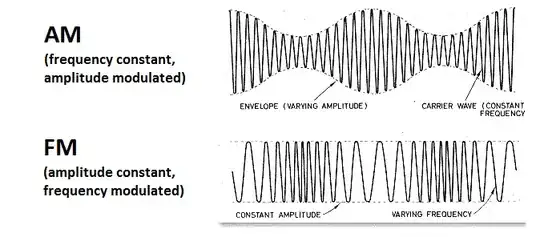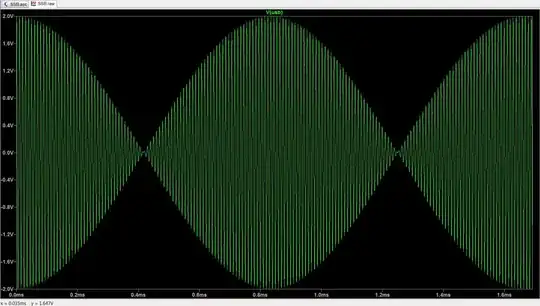The two different techniques are not just different ways of modulating the signal. As you can see from the frequency units in your examples, FM carrier frequency is about two orders of magnitude higher than AM.
This means that FM can modulate a much higher signal frequency than AM, and this leads to greater fidelity (i.e. sound quality).
The FM carrier frequency is also a lot less susceptible to interference effects (particularly atmospheric). This is because it is fairly easy for random attenuation, reflection and refraction to change the amplitude of a signal (thus interfering with AM) but more difficult for it to change the frequency.
When FM became popular in the 1970s, it was regarded as a major technology leap - similar to DAB today. So much so, that Steely Dan wrote a song about it.

